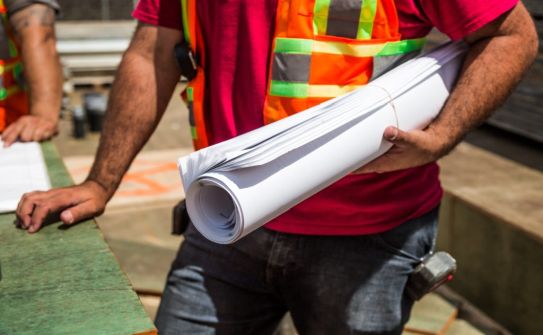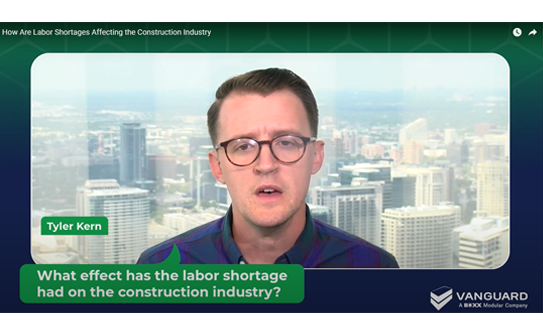Mitigating Labor Shortage Problems with Modular Construction
Across the U.S., the construction industry is dealing with a shortage of qualified workers. Over 2 million construction jobs were eliminated during the economic downturn in the mid-2000s, with the number of people employed in the construction industry dropping from almost 7.7 million in 2006 to 5.5 million in 2010.
Since the low point of the downturn, economic conditions have improved and unemployment numbers have dropped, bringing more stable incomes, increased consumer spending, and positive business outlooks. When other industries prosper, the positive effects extend to the construction field. However, many workers have not returned to the industry as the demand for new construction resurges.

Reports from The Associated General Contractors of America (ACG) show that construction firms are looking to grow but are facing a shortage of qualified individuals to hire.
- 75% expected to add headcount in 2018
- 78% are having trouble finding qualified workers
- 82% expect it to remain difficult to find and hire qualified workers in the next year
However, signs are pointing to growth in construction employment. In 2017, the industry added 241,000 jobs, compared to just 190,000 jobs in 2016. Employment numbers are expected to reach 7 million workers by 2020.
Challenges Created by the Construction Labor Shortage
Until the rebound comes full-circle, we remain in a period of ongoing labor shortages. In light of this, any traditional construction firms are facing challenges in creating project timelines. With less qualified hands working on a project, each step takes a little longer, adding more time to the final completion and delivery. The longer it takes to complete one project, the longer it takes to start the next project and a bottleneck forms.
Additionally, labor shortages have slowed down productivity on building projects which have become more complex. They also require workers with specialized construction skills, but these people just aren’t readily available.
Choosing Modular Construction Mitigates Labor Issues
Compared to traditional construction where all work is done at the build site, the modular construction process involves most of the build being completed in an off-site manufacturing facility with only the final assembly of the building taking place on-site. It’s this off-site component that allows modular manufacturers to continue to operate efficiently even with a small labor pool. Modular manufacturing factories are typically located and operated where the majority of the labor pool is available. While it can be a challenge to find construction workers to travel between traditional on-site projects, modular building always has qualified employees working at the off-site facilities.

The labor shortage is even more problematic when construction is taking place in remote, non-centralized locations. Traditionally, builders, plumbers, electricians, and heavy construction equipment would need to travel hundreds of miles out of the way. Modular construction circumvents the problem of finding construction workers in out-of-the-way locations by completing the majority of the construction off-site, in a central location.
Choosing a Quality Modular Building Partner
Just because a labor shortage poses some challenges, it doesn’t mean you have to work with the first manufacturer you find. Take the time to evaluate modular manufacturers and find the one that’s the best match for your project.
When reaching out to potential partners, look for the following qualities:

The Right Size — The size of a modular manufacturer (their service area, number of locations, and the size of their fleet) can be a strength when it comes to getting the best prices. It also helps by having the necessary financial backing, staffing, insurance, bonding, capabilities, and relationships with qualified contractors in many areas. But, bigger is not always better. If a manufacturer is too big, problems can arise. Partnerships may suffer due to high turnover, customer service may be less personal, and their approach to your project may not be as customized.
Building Experience — An experienced project team can offer a great deal of guidance through the modular construction process. They can add their insight into everything from site location, permits, building design, and installation. Look through a manufacturer’s case studies or project gallery to see if they have experience working on projects that are the same size and type as yours.
Individualized Service — Does a potential building partner respond with timely, professional, and comprehensive communication? Do they personalize their communication and proposals? Will they do site visits? Or is their approach all impersonal?
If there isn’t open communication from the start, you’ll likely experience the same poor levels of service throughout your entire project. Don’t ignore your initial impression of a builder. Additionally, you can use customer testimonials to gauge the reputation of a manufacturer.
Are you looking to construct a new building space or expand your current building? Consider building with modular construction. Reach out to our modular building experts for a free quote.
Ready to solve your space needs?
Modular buildings are the way to go. Request a quote or contact us today to get the conversation started. We’d love to talk to you about how modular can meet — and exceed — your needs.








